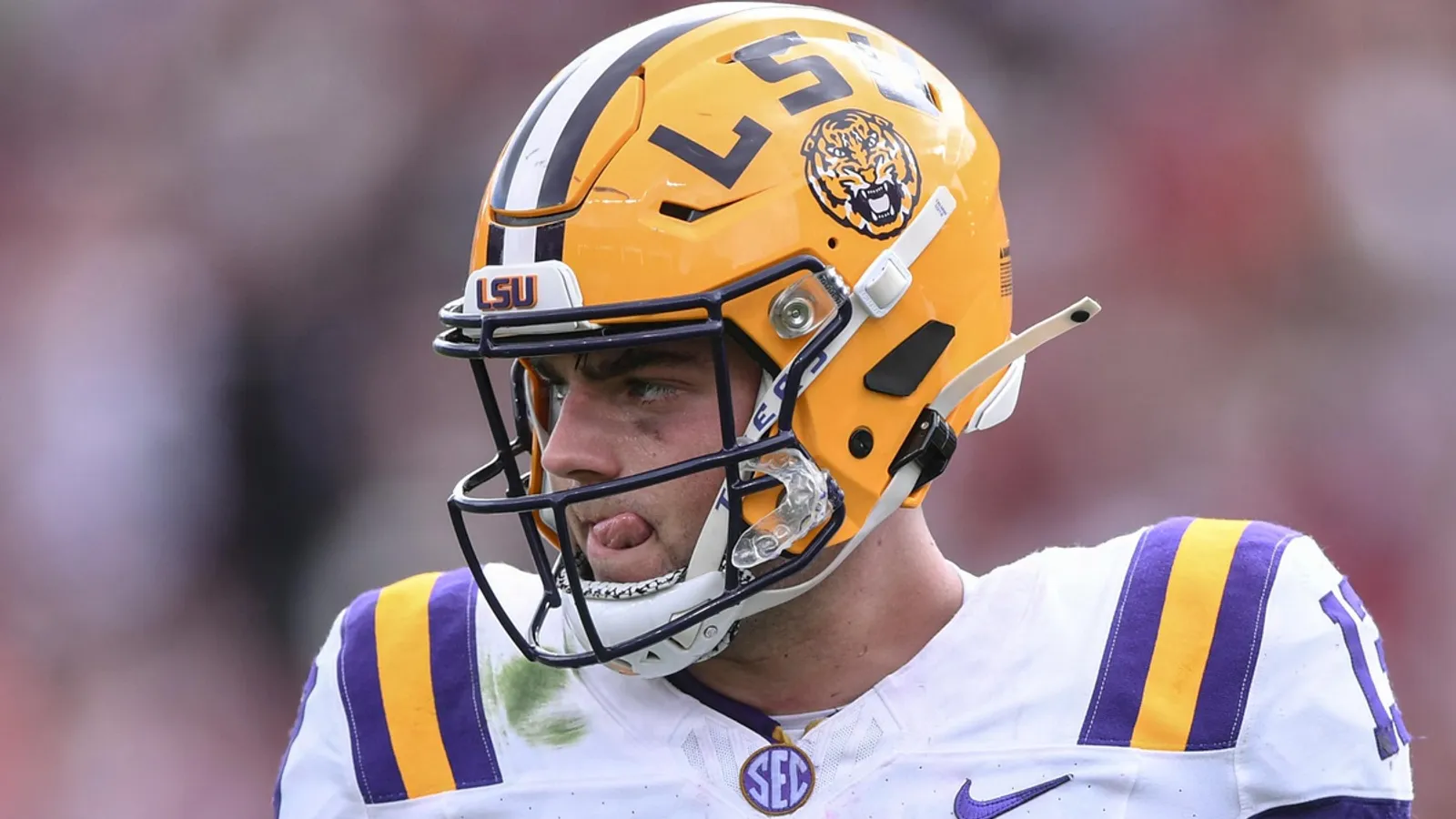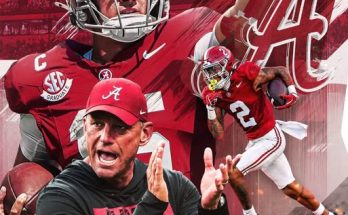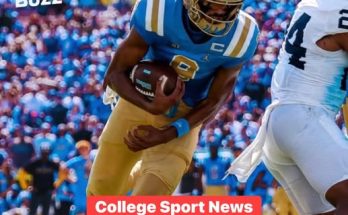LSU Planning to Sully Uniforms with Advertisements: A Controversial Shift in College Football Culture
The landscape of college football has been evolving rapidly over the past decade, but some changes hit harder than others. Recently, news broke that Louisiana State University (LSU), one of the most storied programs in college football history, is considering adding advertisements to their team uniforms. This potential move has sparked a firestorm of debate among fans, alumni, and sports analysts alike, raising serious questions about tradition, commercialization, and the future identity of college athletics.
LSU football is more than just a sport for many; it’s a symbol of pride, heritage, and culture. The purple and gold uniforms, adorned simply with the iconic LSU logo and subtle nods to the Tigers’ history, represent decades of championships, legendary players, and passionate fan support. To the casual observer, it may seem like just a uniform, but to LSU fans and college football purists, the idea of plastering corporate logos across those jerseys feels like sacrilege.
The primary motivation behind this proposed change is financial. College athletics have become a billion-dollar industry, and even successful programs are under increasing pressure to generate more revenue to compete on a national level. Television contracts, stadium expansions, coaching salaries, and recruiting battles all require deep pockets. With the NCAA recently relaxing some of its rules around name, image, and likeness (NIL) deals and commercialization, schools are looking for new ways to monetize their brand without alienating their fan base.
Adding advertisements to uniforms is one such method. Proponents argue it’s a natural evolution in an era where professional sports leagues, including the NFL and NBA, have embraced sponsorships on uniforms as a legitimate revenue source. For example, in the NBA, small corporate patches on jerseys are now commonplace, and European soccer teams have long been adorned with sponsors. In a financial sense, LSU could generate millions annually from sponsorship deals, helping fund not just the football program but potentially other sports and academic endeavors as well.
However, this utilitarian view clashes with the traditions of college football, where uniforms have typically been kept clean and simple, symbolizing school spirit and athletic pride rather than commercial interests. College football has maintained a certain purity in comparison to professional leagues, and many see uniform advertisements as a step toward the full professionalization and commercialization of a sport that still holds a unique place in American culture.
The backlash to LSU’s plan has been immediate and fierce. Social media platforms exploded with fans voicing their disapproval, expressing concerns that ads would cheapen the team’s image and betray the loyalty of generations of players and supporters who wore the uniforms with pride. Alumni, some of whom contributed large sums of money to the university based on their love for the tradition of LSU football, worry this move signals a shift in values from honor and legacy to corporate profit.
Moreover, critics point out the visual impact. Football uniforms are iconic and instantly recognizable, often tied to a school’s identity. The addition of ads risks cluttering the aesthetic, making the uniforms look more like commercial billboards than symbols of collegiate pride. The distinctiveness of LSU’s traditional colors and design could be compromised by logos and branding that clash or detract from the overall look.
There are also broader concerns about the message this sends to student-athletes. College sports have long been a stage where young athletes represent their schools, communities, and their own personal aspirations. Adding advertisements turns players into walking advertisements, potentially shifting the focus from athletic competition and personal development to commercial endorsements. This could further blur the lines between amateur and professional sports, complicating the ethical landscape that college athletics still strives to maintain.
On the other hand, some argue that the college football world has already changed so drastically that ads on uniforms are simply catching up to the reality of modern sports. NIL deals have already allowed players to monetize their own brands, and television contracts have transformed how games are consumed and funded. From this perspective, resisting uniform ads is a nostalgic clinging to the past, and embracing new revenue streams is essential for maintaining competitive programs.
Financial sustainability is a huge issue for many athletic departments, especially those balancing numerous sports beyond just football. Revenue generated from advertisements on football uniforms could be reinvested in scholarships, facilities, health and safety improvements, and academic support for athletes. Supporters insist this is not about greed but about survival and growth in a highly competitive collegiate environment.
Still, LSU is no ordinary program. The Tigers have a rich history and a deeply rooted fan culture that has long resisted such commercialization. The debate over ads on uniforms thus transcends mere business; it’s about identity, loyalty, and respect for a tradition that many feel is already under siege from other pressures like conference realignment and NIL complexities.
The NCAA’s role in this evolving scenario is also crucial. Historically, the organization tightly controlled college sports’ commercial aspects to maintain amateurism, but the recent loosening of these regulations has opened the door to new experiments like uniform advertising. How the NCAA chooses to regulate or encourage these practices will shape the future of college football and potentially change the entire collegiate sports landscape.
If LSU goes forward with this plan, other major programs will likely follow, accelerating a trend that might once have seemed unthinkable. The slippery slope toward uniform ads could become a defining characteristic of college sports, creating a patchwork of sponsored logos across jerseys nationwide. This raises concerns about equity as well; smaller programs might not attract lucrative deals, widening the gap between “haves” and “have-nots” in college athletics.
Conversely, there are questions about fan tolerance. Will supporters continue to show up in large numbers if they feel their beloved teams are selling out their traditions? Could this lead to diminished attendance and engagement, undermining the very financial rationale behind the move? The answer likely depends on how these ads are implemented — size, placement, and the type of sponsors involved will all factor into fan acceptance or rejection.
Beyond fans, players themselves will have opinions. Many college athletes come from backgrounds where representing their school is a source of immense pride. Being asked to wear advertisements might conflict with their sense of identity and loyalty. On the other hand, some players might welcome the exposure and additional funding opportunities such sponsorships bring, especially in an era where NIL deals have empowered athletes to profit from their image.
Another angle worth considering is the impact on recruiting. LSU competes with elite programs nationwide to attract top talent. Uniform advertisements might be viewed positively by some recruits who see the financial benefits and modern approach, or negatively by others who prefer programs that emphasize tradition and heritage. Coaches will have to navigate these nuances carefully.
From a broader cultural perspective, this debate reflects larger tensions in college sports and American society about commercialization, identity, and the balance between tradition and progress. College football programs sit at the intersection of community pride, entertainment, education, and business — and changes like uniform ads force stakeholders to confront what values they prioritize.
In conclusion, LSU’s plan to add advertisements to their uniforms is a microcosm of the challenges facing college football today. It highlights the competing pressures of financial necessity, tradition, fan loyalty, athlete identity, and institutional integrity. Whether this move ultimately enhances or diminishes the LSU brand remains to be seen, but what is clear is that the decision will not just affect one team; it could set a precedent that reshapes the very nature of college football uniforms and the culture surrounding them.
Fans and observers should prepare for an intense debate in the coming months as LSU and other programs wrestle with these choices. For some, the idea of ads on the uniforms will feel like a betrayal, while for others, it represents a pragmatic step toward securing the future of collegiate athletics. What remains certain is that college football, a sport steeped in history and emotion, is in the midst of a transformation that will challenge deeply held beliefs about what the game represents — and what the uniforms symbolize on the field every Saturday.



